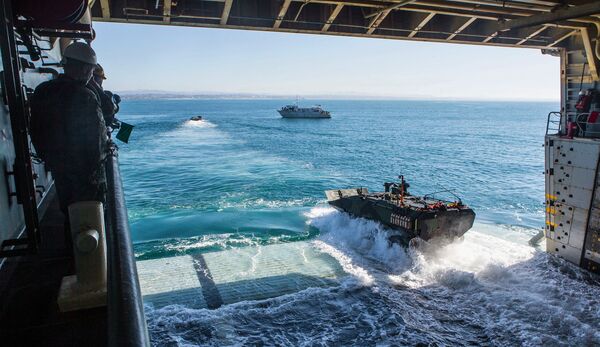
The US Marine Corps ACV is designed to deploy off the back of a ship and swim in open waters as well as operate in littoral environments. (US Marine Corps)
Amphibious combat vehicles (ACVs) and other tactical vehicles find themselves with an uncertain future until after the US Marine Corps (USMC) finishes its Infantry Battalion Experimentation (IBX), service officials said in January.
The USMC first released its Ground Combat and Tactical Vehicle Strategy (GCTVS) in 2021, but service leaders have since incorporated the vehicle strategy into the budgeting process, said Kevin McConnell, deputy director for fires and manoeuvre at USMC Ground Combat Element division. The ACV, Ultra-Light Tactical Vehicle (ULTV), and Joint Light Tactical Vehicle (JLTV) will be part of the USMC's analysis of IBX “to see if that is going to warrant reprioritisation of our vehicle procurements”, he told Janes in an interview on 18 January.
The programme objective memorandum for fiscal year (FY) 2026 is in the final planning stages, but because IBX is “in no way producing actionable output at this point”, the USMC will have to make decisions about its vehicle portfolio on the other side of 2026, McConnell said. Actionable data is now expected in the boreal fall of 2024, he added.
One of the decisions is on the density of ULTV in the battalion. Currently, there are 12 vehicles to a battalion, but there are USMC projections that go as high as 80, McConnell said. IBX could look at how tactically useful it is to have so many vehicles in an expeditionary mission, but also how difficult it is to sustain and maintain these vehicles in a tactical environment.
Looking to read the full article?
Gain unlimited access to Janes news and more...







